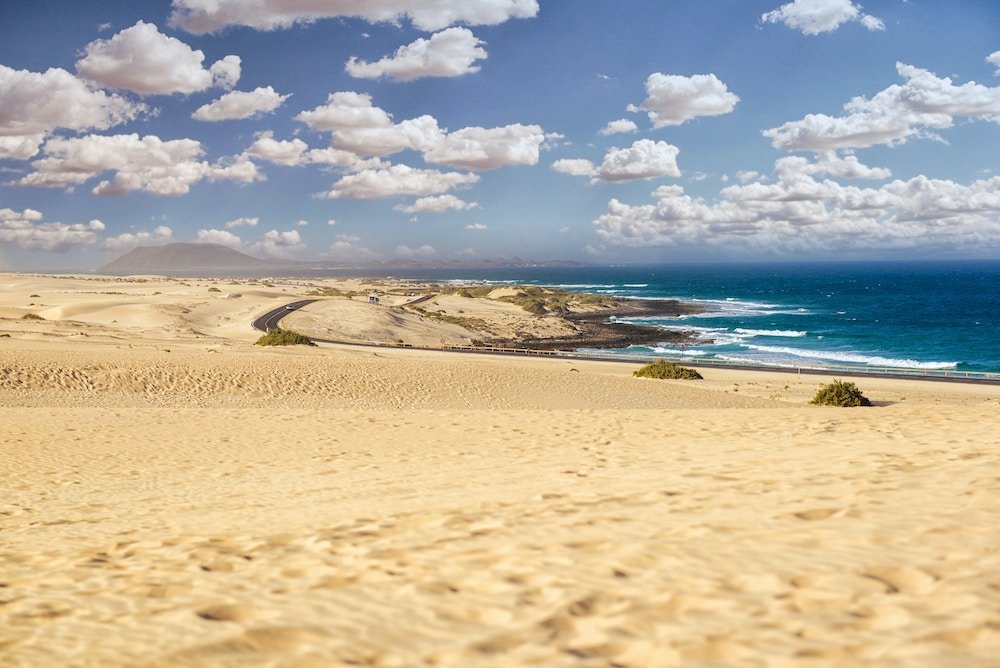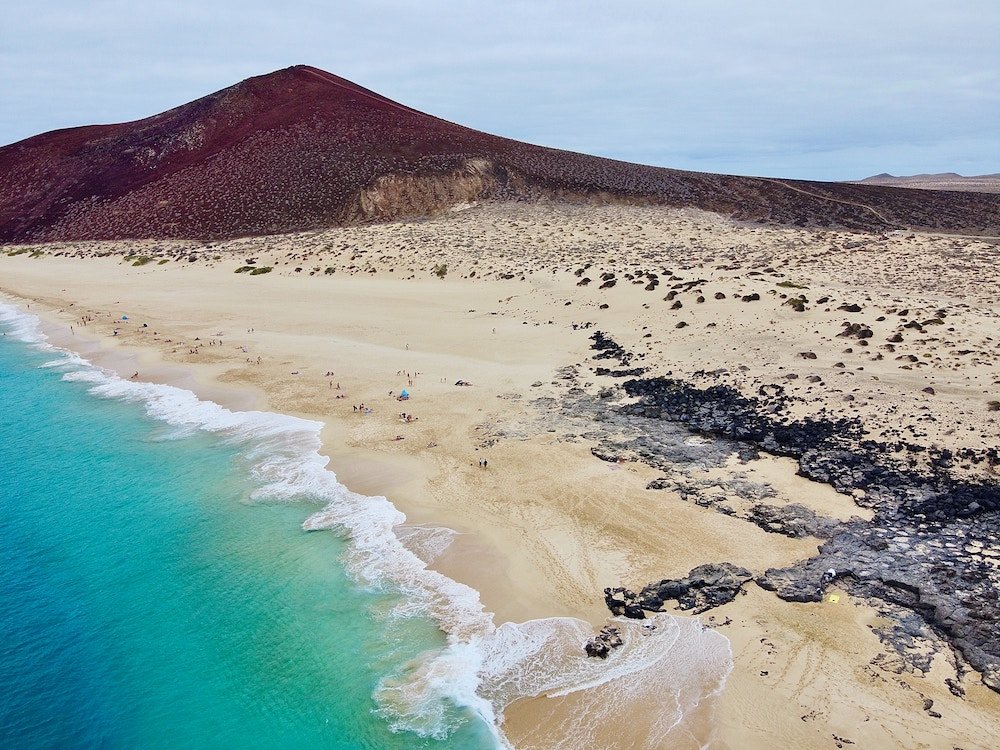
Want to know which are the most beautiful islands in the Atlantic Ocean?
The vast and majestic expanse of the Atlantic Ocean, with its rich maritime history and diverse ecosystems, plays host to a myriad of enchanting islands.
Nestled within this expansive waterway are hidden gems that boast unparalleled natural beauty, cultural richness, and unique experiences.
In this exploration, we set our sights on the jewels of the Atlantic – the islands that captivate the imagination and beckon travelers seeking a blend of tranquility and adventure.
Stretching across approximately 41 million square miles, the Atlantic Ocean stands as the second-largest of the world’s oceans, forming a crucial link between the Americas, Europe, Africa, and beyond.
Its currents, tides, and maritime heritage have shaped the destinies of nations and fostered a rich tapestry of cultures along its shores.
Amidst the vastness of the Atlantic, islands emerge as distinctive havens, each with its own story to tell.
These islands serve as natural laboratories of biodiversity, cultural melting pots, and refuge for both terrestrial and marine life.
Moreover, they contribute significantly to global ecosystems and play a pivotal role in regional economies through tourism, agriculture, and sustainable practices.
As we embark on this virtual journey, our purpose is clear – to shed light on the splendor of the “islands in the Atlantic.”
This article aims to be a comprehensive guide, introducing readers to the charm, allure, and unique features of the eight most beautiful islands that grace the Atlantic Ocean.
From the rugged landscapes of the Azores to the sun-kissed beaches of the Bahamas, we delve into the distinctiveness of each destination, inviting readers to explore and appreciate the diverse treasures that these islands hold.
1: Azores

Nestled in the mid-Atlantic, the Azores archipelago is a collection of nine volcanic islands that form an oasis of tranquility amidst the vastness of the ocean.
Located approximately 1,000 miles off the coast of Portugal, these islands boast a unique blend of European and subtropical influences.
The rugged topography, marked by volcanic craters and lush valleys, adds to the allure of this remote paradise.
What sets the Azores apart is not just their geographical location but the geological wonders that define them.
From the towering Pico Mountain, Portugal’s highest peak, to the bubbling hot springs and crater lakes, the Azores showcase the raw beauty of volcanic landscapes.
The archipelago’s isolation has also fostered a rich biodiversity, making it a haven for nature enthusiasts.
As you traverse the Azorean islands, you’ll encounter a kaleidoscope of landscapes. Verdant meadows give way to dramatic cliffs, and serene lakes reflect the ever-changing skies.
The Azores are a photographer’s dream, with each island presenting a unique palette of colors and textures.
Don’t miss the iconic twin lakes of Sete Cidades, where azure and emerald waters mirror the surrounding hills.
Whether you’re standing atop the volcanic craters or exploring coastal cliffs, the Azores offer breathtaking panoramic views.
From the summit of Mount Pico, gaze across the archipelago, taking in the sprawling vistas of the Atlantic.
Sunset over the ocean is a spectacle not to be missed, casting a warm glow over the rugged terrain.
For the adventurous soul, the Azores provide a playground of possibilities.
Hiking trails weave through lush forests and along coastal cliffs, offering a chance to discover hidden waterfalls and secluded beaches.
The archipelago’s volcanic origins also mean opportunities for activities like caving and canyoning, adding an adrenaline rush to your Azorean escape.
Beyond its natural wonders, the Azores boast a rich cultural heritage shaped by centuries of seafaring history.
Explore charming villages with cobblestone streets, adorned with whitewashed houses and vibrant gardens.
Delve into local traditions during festivals where folklore, music, and traditional cuisine converge, offering a glimpse into the warm hospitality of the Azorean people.
2: Santorini

Nestled in the Aegean Sea, Santorini is a Cycladic gem that rises like a mythical island from the azure waters.
Located southeast of mainland Greece, this Greek island is steeped in a rich history that dates back to ancient times.
Once known as Thera, Santorini has witnessed the rise and fall of civilizations, leaving behind a legacy that captivates the imagination.
What distinguishes Santorini is its dramatic topography shaped by a cataclysmic volcanic eruption in the second millennium BCE.
The resulting caldera, a vast water-filled crater, encircles the island’s central hub, creating an iconic and breathtaking setting.
This volcanic origin, combined with its white-washed buildings, forms the backdrop for a picturesque escape.
Santorini’s architecture is a visual delight, characterized by whitewashed buildings with blue-domed roofs that contrast against the deep blue sea and sky.
The labyrinthine alleys of Oia and Fira, adorned with bougainvillea and vibrant doorways, offer a journey through a postcard-perfect setting.
Traditional cave houses, carved into the cliffs, provide a unique and cozy accommodation experience.
Renowned as one of the best places to witness a sunset, Santorini’s evening spectacle is nothing short of magical.
As the sun dips below the horizon, the sky transforms into a canvas of warm hues, casting a golden glow over the caldera and neighboring islands.
The beaches, with their volcanic black or red sands, invite visitors to unwind against the backdrop of crystal-clear waters.
Santorini’s culinary scene is a gastronomic journey, with local ingredients and traditional flavors taking center stage.
Indulge in fresh seafood, sun-ripened tomatoes, and locally-produced wine as you dine in cliffside tavernas overlooking the Aegean.
The island’s distinctive Assyrtiko wine, cultivated in volcanic soil, adds a unique touch to the dining experience.
Immerse yourself in Santorini’s rich history by exploring archaeological wonders such as the ancient city of Akrotiri, a Minoan Bronze Age settlement preserved in volcanic ash.
Visit the prehistoric Thera Museum to marvel at artifacts that unveil the island’s past.
The medieval castles of Emporio and Pyrgos add a touch of history to the island’s diverse tapestry.
3: Madeira

Nestled in the Atlantic, Madeira emerges as a haven of natural beauty and serenity.
This autonomous region of Portugal is renowned for its lush landscapes, subtropical climate, and a rich cultural tapestry.
The archipelago comprises the main island, Madeira, and several smaller islands, each contributing to the unique charm of this Atlantic gem.
Madeira is characterized by its verdant landscapes, jagged cliffs, and a network of irrigation channels known as levadas.
The island’s diverse ecosystems, ranging from dense laurel forests to panoramic coastal vistas, create an enchanting backdrop for exploration.
Its strategic location has also shaped a cultural blend that reflects Portuguese influences with a hint of island uniqueness.
Madeira’s botanical gardens stand as a testament to the island’s commitment to preserving its unique flora.
The Monte Palace Tropical Garden, perched on the hills above Funchal, showcases a stunning collection of plants from around the world.
The Madeira Botanical Garden, with its terraced layout, provides a scenic retreat where vibrant flowers and indigenous species thrive.
The island’s topography is dominated by rugged mountains, including Pico do Arieiro and Pico Ruivo, offering panoramic views of the Atlantic.
The laurel forests of Madeira, recognized as a UNESCO World Heritage site, house diverse plant and animal species, creating an immersive experience for nature enthusiasts.
The mountainous landscapes also contribute to the island’s favorable climate, characterized by mild temperatures throughout the year.
Madeira is a hiker’s paradise, with an extensive network of trails winding through forests, along levadas, and up to mountain peaks.
Levadas, historic irrigation channels that crisscross the island, provide scenic paths for walks.
The Levada do Caldeirão Verde, surrounded by lush greenery, and the challenging Pico Ruivo hike are just a glimpse of the diverse trails awaiting exploration.
The azure waters surrounding Madeira invite enthusiasts to explore the Atlantic in various ways.
From snorkeling in the crystalline bays to scuba diving amidst vibrant marine life, the island offers an underwater paradise.
Adventurous souls can indulge in activities like kayaking and paddleboarding, providing a unique perspective of Madeira’s coastline.
4: Bermuda
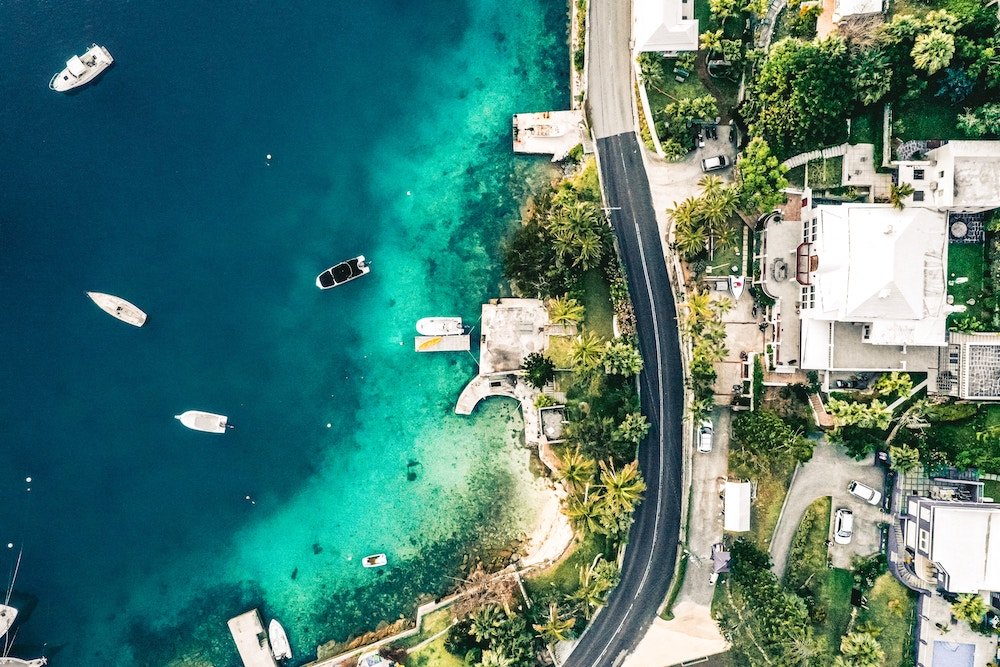
Nestled in the western part of the North Atlantic Ocean, Bermuda is a subtropical paradise that captivates with its turquoise waters and pink-sand beaches.
Despite its isolation, this British Overseas Territory has become a renowned destination, offering a blend of natural beauty, historical richness, and vibrant culture.
Bermuda’s history is interwoven with tales of exploration and maritime adventure.
Discovered by Spanish explorer Juan de Bermúdez in the early 16th century, the island later became a crucial outpost during the age of seafaring exploration.
Its strategic location in the Atlantic has played a pivotal role in naval history, including during the American Civil War and both World Wars.
One of Bermuda’s most iconic features is its mesmerizing pink sand beaches.
The rosy hue results from the presence of crushed coral and shells, creating a stunning contrast with the azure waters.
Horseshoe Bay Beach, with its powdery pink sands and crystal-clear waters, stands as a testament to the island’s natural allure.
Beneath the surface, Bermuda’s coastal beauty extends to vibrant coral reefs teeming with marine life.
Snorkelers and divers can explore these underwater ecosystems, discovering a kaleidoscope of colors and a diverse array of fish species.
The South Shore’s coral formations and shipwrecks add an adventurous dimension to Bermuda’s coastal exploration.
Bermuda’s coastline is adorned with iconic lighthouses that have guided seafarers for centuries.
The Gibbs Hill Lighthouse offers panoramic views of the island, while the historic St. David’s Lighthouse stands as a maritime relic.
Beyond lighthouses, visitors can explore the Royal Naval Dockyard and Fort St. Catherine, immersing themselves in the island’s military and colonial history.
Bermuda comes alive with a vibrant tapestry of cultural events that celebrate its heritage.
Festivals, including the Gombey Festival and Bermuda Carnival, showcase the island’s music, dance, and colorful traditions.
The Harbour Nights in Hamilton, a weekly event featuring local vendors and street performances, provides a lively atmosphere for both locals and visitors.
5: Faroe Islands
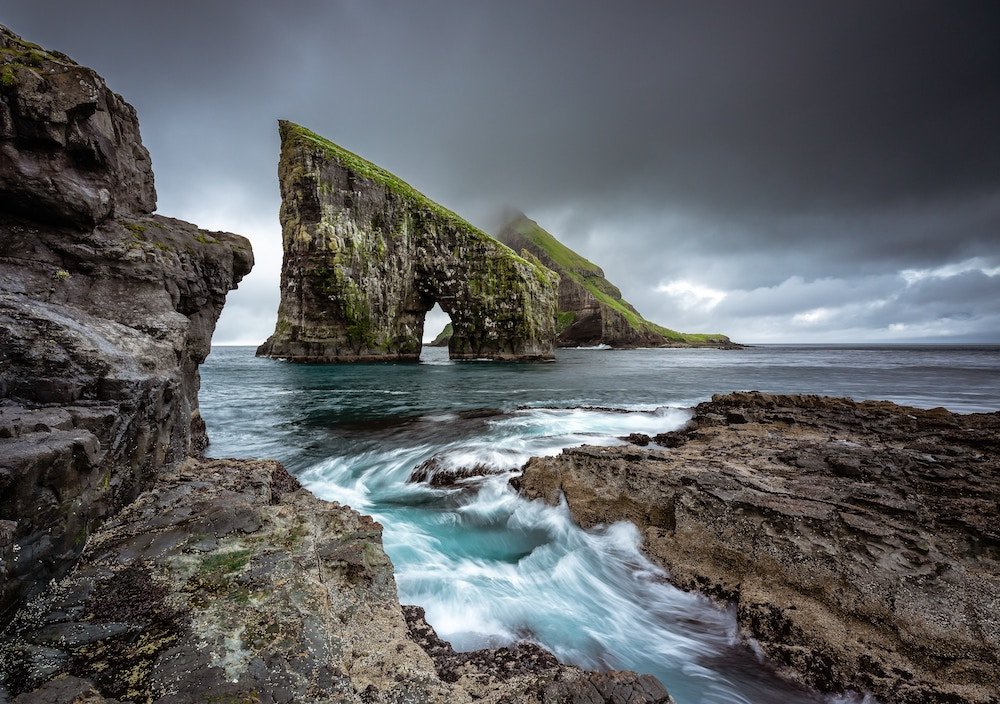
Tucked away in the North Atlantic, between Iceland and Norway, lie the captivating Faroe Islands.
This archipelago of 18 islands is renowned for its dramatic landscapes and resilient culture.
The Faroe Islands boast a subarctic climate, characterized by cool temperatures, frequent rainfall, and ever-changing weather patterns that add to the mystique of this remote destination.
What sets the Faroe Islands apart is their rugged isolation and the indomitable spirit of the Faroese people.
These islands are a testament to the harmonious coexistence of nature and human civilization, with traditional grass-roofed houses dotting the green hillsides.
The Faroes’ unique blend of Norse heritage and modern innovation creates a distinct atmosphere that draws visitors seeking both tranquility and adventure.
The Faroe Islands are a masterpiece of nature, sculpted by volcanic activity and shaped by the relentless forces of the North Atlantic.
Majestic fjords cut through the landscapes, surrounded by towering cliffs that plunge into the ocean.
The iconic sea stacks of Drangarnir and the towering cliffs of Vestmanna provide awe-inspiring vistas, showcasing the untamed beauty of these islands.
Despite their modest size, the Faroe Islands are a haven for wildlife enthusiasts.
Seabird colonies, including puffins and guillemots, find sanctuary on the steep cliffs, while seals and whales navigate the surrounding waters.
The diverse marine life and bird populations contribute to the Faroes’ status as a prime destination for nature lovers.
For birdwatchers, the Faroe Islands offer a front-row seat to the theater of avian life.
Clifftop viewpoints and hiking trails provide opportunities to observe puffins, kittiwakes, and fulmars in their natural habitat.
Mykines, often referred to as the “Bird Paradise,” is a must-visit island, offering a sanctuary for numerous bird species.
The Faroe Islands present a dreamlike canvas for photographers, with ever-changing weather casting a dynamic play of light and shadow on the landscapes.
Capture the ethereal beauty of cascading waterfalls, picturesque villages, and the interplay of mist and mountains.
Each corner of the Faroes holds a unique frame, inviting photographers to document the raw and unspoiled charm of these islands.
6: Canary Islands
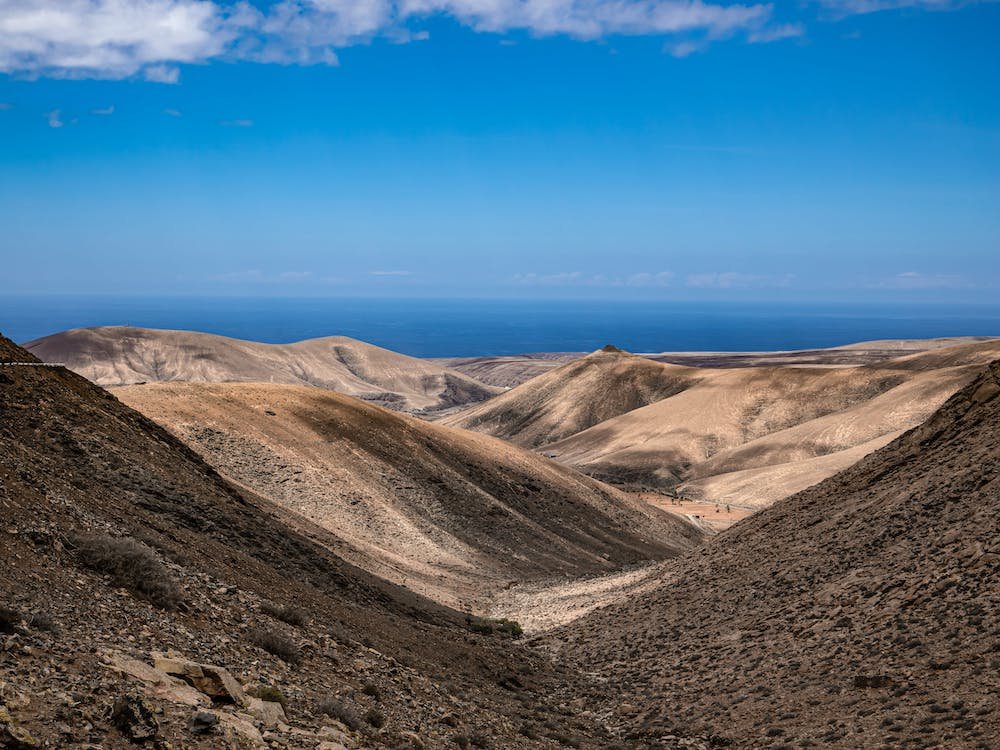
Nestled off the northwestern coast of Africa, the Canary Islands form a captivating archipelago known for their diverse landscapes and vibrant culture.
Comprising seven main islands, each with its own unique character, the Canaries have earned a reputation as a paradise for sun-seekers, nature enthusiasts, and adventure seekers alike.
The Canary Islands boast a subtropical climate, characterized by mild temperatures throughout the year.
This climatic diversity is influenced by the trade winds, creating a range of ecosystems from arid landscapes to lush forests.
The archipelago’s diverse flora and fauna thrive in this unique blend of African and European influences.
The volcanic origins of the Canary Islands are evident in their dramatic landscapes.
Majestic volcanic peaks, such as Mount Teide on Tenerife, rise proudly, offering panoramic views of the archipelago.
Lava fields, craters, and unique rock formations create an otherworldly setting, inviting exploration and appreciation of the forces that shaped these islands.
Contrasting with the volcanic terrain, the Canary Islands boast an array of beaches, ranging from golden stretches of sand to hidden coves with black volcanic shores.
Lush forests, particularly in areas like Garajonay National Park on La Gomera, showcase the islands’ biodiversity.
The striking contrast between dense woodlands and volcanic landscapes adds to the allure of these islands.
The crystal-clear waters surrounding the Canary Islands provide an aquatic playground for water sports enthusiasts.
From surfing the Atlantic waves in Fuerteventura to diving into vibrant underwater realms, the archipelago offers an array of activities.
Snorkeling, windsurfing, and sailing are just a few ways to embrace the marine beauty that surrounds these islands.
The culinary scene in the Canary Islands is a delightful fusion of Spanish, African, and Latin American influences.
Fresh seafood, locally sourced produce, and unique spices characterize the gastronomy of the islands.
From traditional Canarian dishes like “papas arrugadas” to exquisite seafood paellas, the culinary experiences in the Canary Islands are a celebration of the archipelago’s cultural diversity.
7: Bahamas

Bathed in the warm embrace of the Atlantic Ocean, the Bahamas is an archipelago that beckons with its sun-kissed beaches and vibrant coral reefs.
Located southeast of Florida, this tropical paradise is renowned for its stunning natural beauty and vibrant culture.
The Bahamas, comprising over 700 islands and cays, holds a special place in the hearts of travelers seeking the epitome of Caribbean allure.
Beyond its geographical charm, the Bahamas has played a significant role in history, serving as a haven for pirates during the Golden Age of Piracy.
Today, its allure extends far beyond its storied past, with highlights that include the vibrant capital city of Nassau, the serene Exuma Cays, and the Out Islands, where secluded retreats offer a tranquil escape.
The Bahamas is synonymous with pristine, crystal-clear waters that gently lap against powder-soft, white-sand beaches.
The translucent azure hues create a mesmerizing backdrop, inviting visitors to immerse themselves in the serenity of the ocean.
From the renowned Pink Sands Beach on Harbour Island to the secluded beauty of the Exumas, each stretch of coastline is a testament to the Bahamas’ tropical allure.
Beneath the surface, the Bahamas reveals a kaleidoscope of marine life that is nothing short of enchanting.
Vibrant coral reefs teem with colorful fish, and the famous Blue Holes, underwater sinkholes, provide a unique diving experience.
From swimming with nurse sharks in Compass Cay to exploring the Andros Barrier Reef, the Bahamas offers a front-row seat to the wonders of the underwater world.
For enthusiasts of aquatic adventures, the Bahamas is a playground of possibilities.
Snorkeling reveals vibrant coral gardens and playful marine life in the shallows, while divers can explore underwater caves, shipwrecks, and the diverse ecosystems of the ocean depths.
The clarity of the Bahamian waters enhances these experiences, making every dive and snorkel an unforgettable journey.
The Bahamas comes alive with a rich tapestry of festivals and events that celebrate its vibrant culture.
From the vibrant Junkanoo Carnival, where colorful parades and music fill the streets, to the traditional regattas that showcase the Bahamian skill in boat racing, there’s always a celebration to join.
Local markets and cultural events offer a chance to savor Bahamian cuisine and crafts, providing a taste of the archipelago’s lively spirit.
8: Cape Verde

In the vast Atlantic Ocean, off the western coast of Africa, lies the captivating archipelago of Cape Verde.
This cluster of ten islands has been shaped by a unique blend of African, European, and Brazilian influences, creating a cultural mosaic that sets it apart.
Cape Verde, known locally as Cabo Verde, offers a harmonious convergence of vibrant music, diverse traditions, and breathtaking landscapes.
Cape Verde’s position as a crossroads of cultures has endowed it with a distinct identity.
From its colonial past to the rhythmic beats of its music, the archipelago stands as a testament to resilience and creativity.
The warmth of the Cape Verdean people adds an inviting touch to the islands, making them a haven for those seeking a unique and enriching travel experience.
Cape Verde’s natural beauty unfolds in a tapestry of contrasting landscapes.
Pristine beaches, such as Santa Maria on Sal Island, showcase golden sands caressed by azure waters.
The archipelago’s volcanic origin is evident in landscapes marked by rugged peaks, like Fogo’s Pico do Fogo, where the otherworldly terrain provides a backdrop for exploration and adventure.
Despite its arid climate, Cape Verde surprises visitors with its unique flora and fauna.
Indigenous plant species, adapted to the challenging conditions, thrive in the valleys and highlands.
Birdwatchers can spot endemic species like the Raso lark, while marine life, including sea turtles, adds to the biodiversity. The delicate balance of life on these islands reflects the resilience of nature in the face of adversity.
Music is the heartbeat of Cape Verde, a rhythmic expression of the archipelago’s soul.
The melodic strains of Morna, a poignant genre often compared to the blues, and the lively beats of Funaná, accompanied by accordion and ferrinho, resonate through the streets and hillsides.
Dance is an integral part of Cape Verdean culture, with traditional dances like Coladeira and Batuque embodying the vivacity and spirit of the islands.
Cape Verde’s cultural richness is woven into its traditions, passed down through generations.
From vibrant festivals celebrating saints to the spirited Carnival celebrations, each island embraces its unique traditions.
Local crafts, including woven baskets and embroidered textiles, reflect the artistry and craftsmanship that define Cape Verdean heritage.
Conclusion
As we conclude our exploration of the Atlantic islands, we’ve embarked on a journey that has unfolded the beauty and diversity of these enchanting destinations.
From the rugged landscapes of the Azores to the rhythmic beats of Cape Verde, each island has offered a unique tapestry of natural wonders, cultural richness, and inviting experiences.
- Azores: A haven of volcanic beauty, scenic landscapes, and outdoor adventures.
- Santorini: A Greek gem known for its distinct architecture, sunsets, and cultural experiences.
- Madeira: An Atlantic oasis with botanical gardens, mountainous landscapes, and outdoor activities.
- Bermuda: A historic and coastal paradise featuring pink sand beaches, coral reefs, and cultural attractions.
- Faroe Islands: A rugged archipelago with dramatic fjords, diverse wildlife, and outdoor activities.
- Canary Islands: A tropical haven with diverse landscapes, volcanic features, and vibrant recreational activities.
- Bahamas: A Caribbean paradise boasting crystal-clear waters, exotic marine life, and lively festivals.
- Cape Verde: A culturally rich archipelago with beautiful beaches, volcanic landscapes, and unique traditions.
The Atlantic islands beckon with open arms, inviting intrepid travelers to venture beyond the familiar and embrace the wonders that await.
Whether you seek the tranquility of remote landscapes, the vibrancy of cultural festivals, or the thrill of underwater adventures, each island holds a promise of discovery and enrichment.
Explore the winding trails of the Azores, feel the warmth of the Santorinian sun on your skin, immerse yourself in the rich melodies of Cape Verde, and surrender to the tropical allure of the Bahamas.
These islands offer not just a getaway but a transformative experience that lingers in the heart and memories of those who embark on the journey.
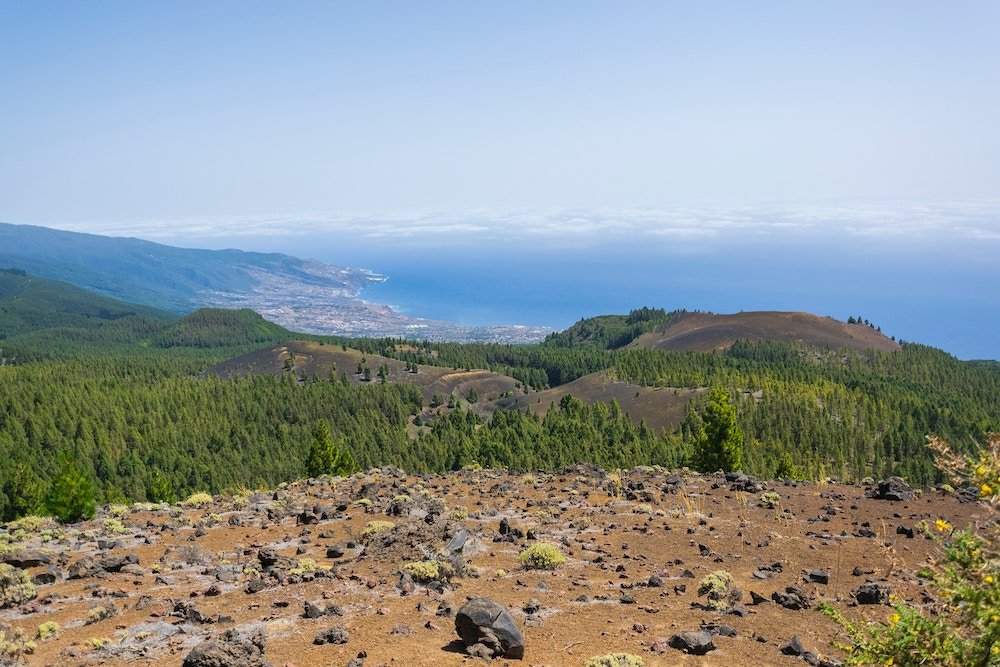
FAQ’s About Islands in the Atlantic:
Are there any islands in the Mid Atlantic?
Yes, there are several islands located in the Mid Atlantic.
One notable example is the Azores archipelago, which is situated in the North Atlantic Ocean and is an autonomous region of Portugal.
The Azores, known for their volcanic landscapes and scenic beauty, are positioned approximately 1,000 miles off the coast of Portugal, making them a distinctive feature in the Mid Atlantic.
What are 4 major European islands in the North Atlantic?
Four major European islands in the North Atlantic include:
- Iceland: Known for its geothermal wonders, glaciers, and unique landscapes.
- Ireland: The Emerald Isle, famous for its lush greenery, rich history, and friendly culture.
- Great Britain: Comprising England, Scotland, and Wales, it is the largest island in the British Isles with diverse landscapes and historical significance.
- Faroe Islands: An autonomous territory of Denmark, characterized by dramatic fjords and a rugged, Nordic beauty.
What is the most isolated island in the Atlantic?
Tristan da Cunha is often considered the most isolated island in the Atlantic.
It is part of a remote archipelago in the South Atlantic Ocean and is a British Overseas Territory.
Tristan da Cunha is known for its extreme isolation, with the nearest inhabited land, Saint Helena, located over 1,500 miles away.
What is the tiny island in the Atlantic Ocean?
One example of a tiny island in the Atlantic Ocean is Saint Pierre and Miquelon.
These islands, located south of Newfoundland, Canada, are a self-governing territorial overseas collectivity of France.
Despite their small size, these islands possess a unique cultural and historical significance, reflecting their French heritage.
What is a large island in the North Atlantic Ocean?
Greenland is a large island in the North Atlantic Ocean.
As an autonomous territory within the Kingdom of Denmark, Greenland is known for its vast ice sheets, Arctic landscapes, and distinctive Inuit culture.
It is the world’s largest island and occupies a strategic position in the North Atlantic region.
